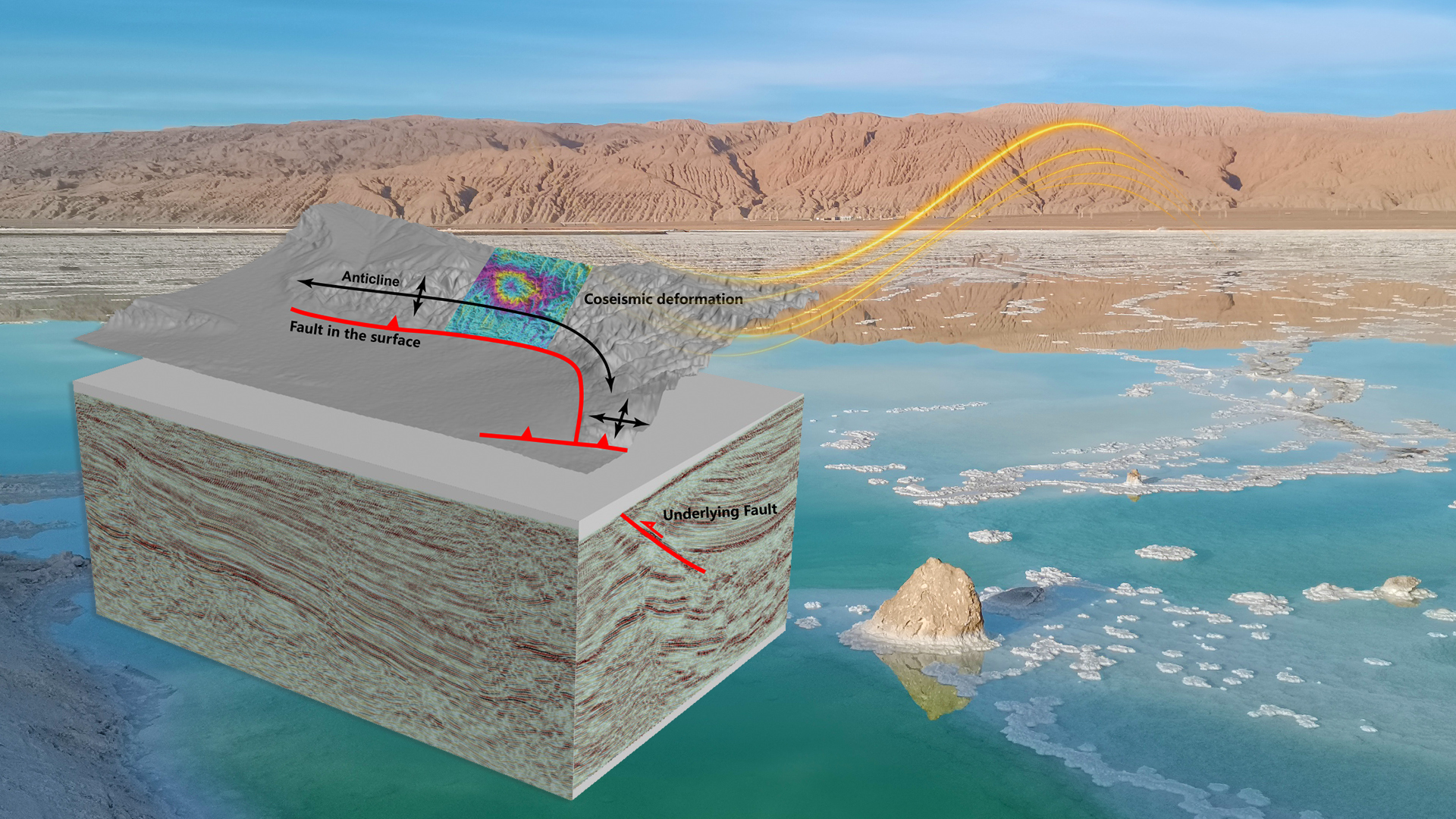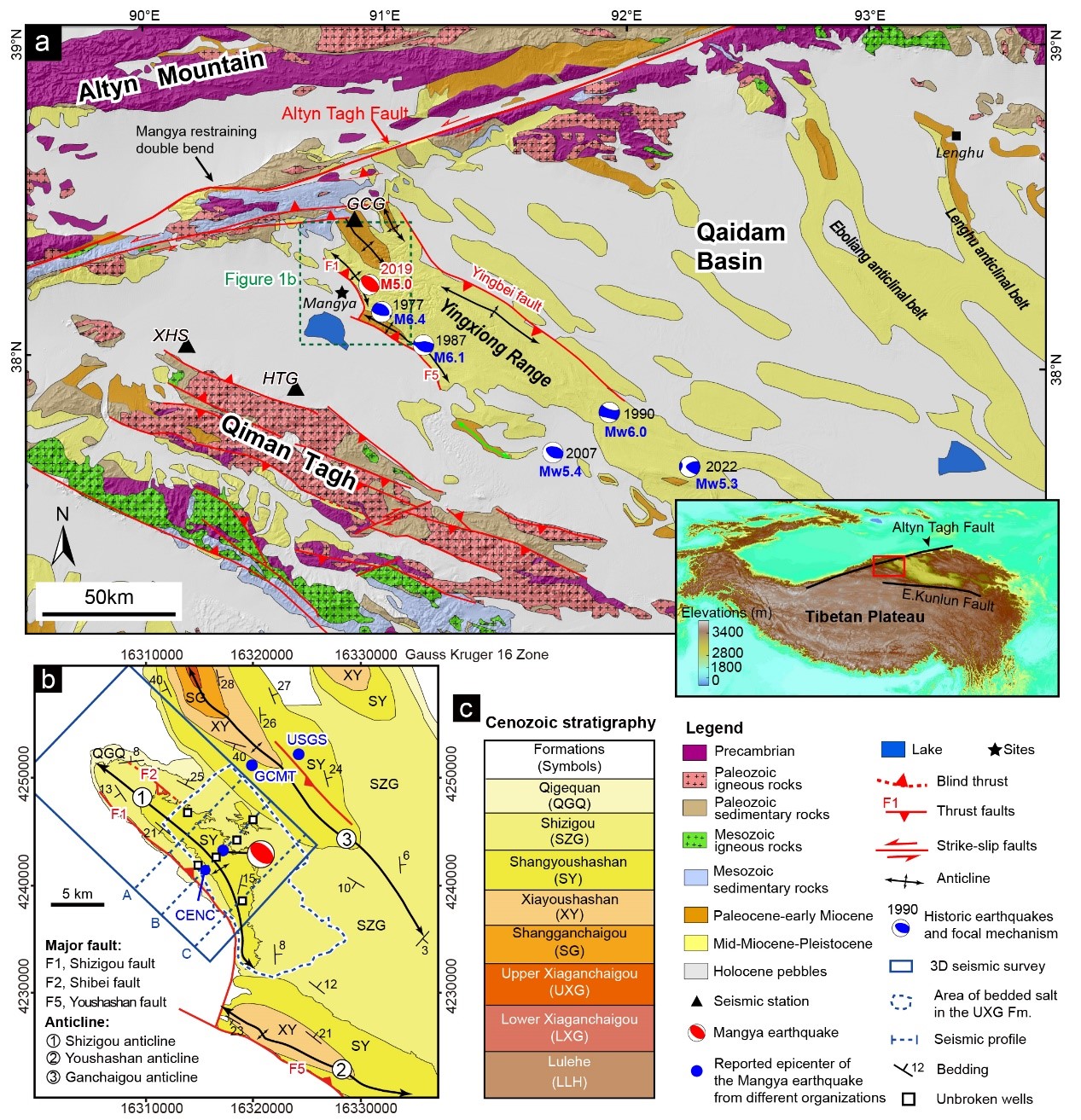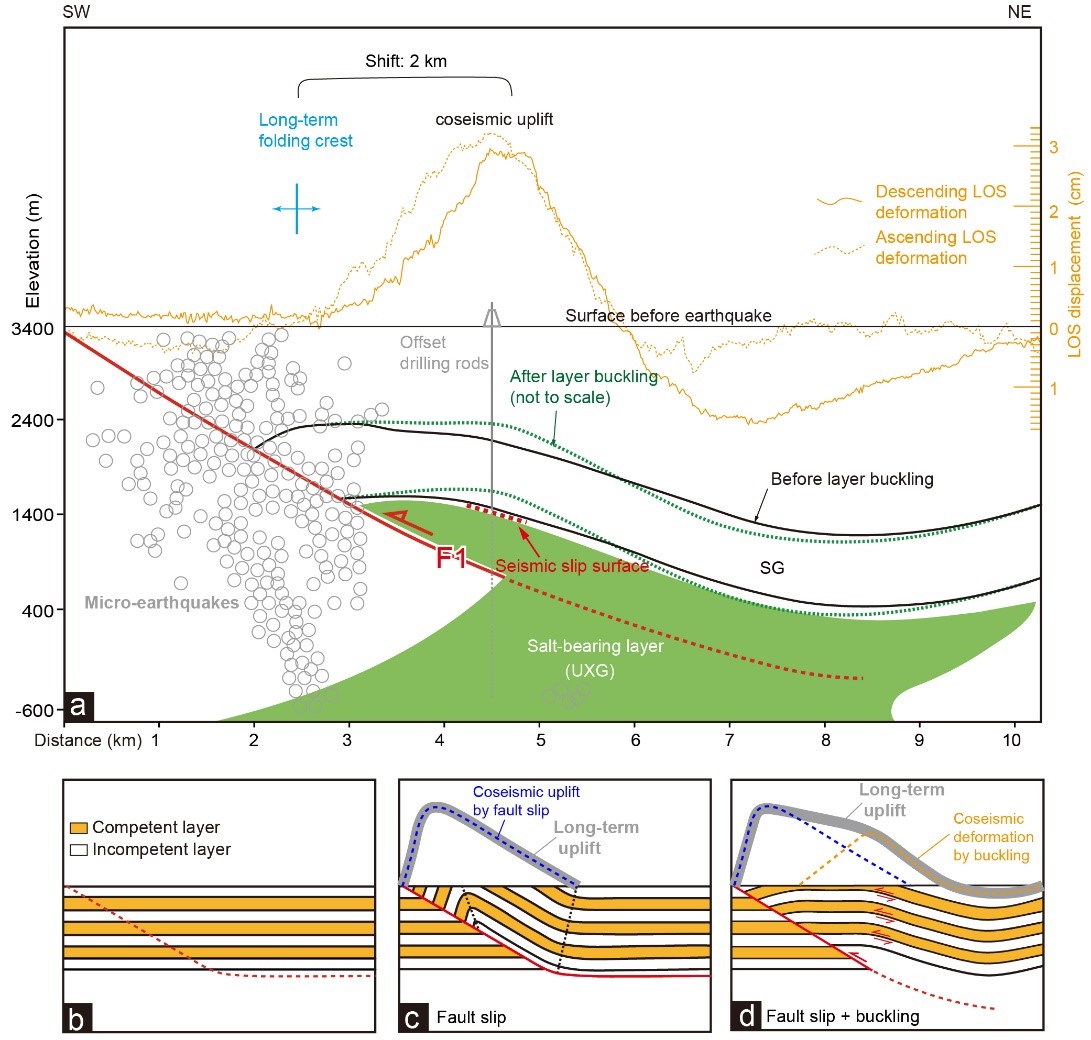Active fold-thrust belts are located at the front of highly deformed orogenic regions, such as the Apennines, the Zagros Mountains, the Himalayas, the Rocky Mountains, and the Andes. These areas are densely populated and industrially concentrated, posing significant earthquake hazards with the potential to greatly impact human civilization. Understanding the complex relationships among fault slip, fold growth, and earthquakes would benefit earthquake risk assessment in these regions. It would also shed light on the intricate interplay between long-term topographic growth and short-term coseismic uplift, an energetic topic characterized by discrepancies and ongoing debates. This understanding is crucial for comprehending how sudden, intense earthquakes impact the slow, progressive deformation of folds and the shaping of landscapes over millions of years.
Previous studies have often highlighted the primary role of underlying faults in shaping fold crests and triggering recurrent earthquakes. As a result, scientists have applied fault-related fold models to correlate long-term fold growth with coseismic deformation and to estimate slip rates in active fold-thrust belts. However, buckle folding—a significant mechanism involving bed-parallel contraction—also plays a crucial role in fold growth and seismic activity. Despite being proposed earlier than the fault-related folding theory and receiving recent attention in numerical and experimental modeling, buckle folding, along with the earthquakes associated with it, remains underreported in evolving works of literature. Seismic-related studies often prioritize the analysis of coseismic surface deformation. However, the precise geometries and kinematics of subsurface seismogenic structures, which are more challenging to quantify, pose a significant obstacle to advancing our knowledge of buckle folding, particularly in regions characterized by complicated seismogenic structures.

Professor Kejie Chen’s team from the Department of Earth and Space Sciences at the Southern University of Science and Technology (SUSTech), along with collaborators, has published a study that analyzes the relationship and underlying mechanisms between long-term fold growth and short-term coseismic deformation in active fold-thrust belts. It provides new insights into understanding how sudden, intense earthquakes influence slow, progressive fold deformation and landscape formation over millions of years. The findings are also of great practical significance for earthquake risk assessment in fold-thrust belts, which are important industrial zones and inhabit large populations.
Their work, titled “Buckling contributes to both coseismic uplift and long-term fold growth in active fold-thrust belts”, has been published in the journal Geology.
This paper addresses the aforementioned technical challenges and scientific questions by studying the 2019 Mangya Mw 5.0 earthquake in the Shizigou anticline in the active fold-thrust belt of the western Qaidam Basin on the Tibetan Plateau. The Yingxiong Range is the largest anticlinal belt in the Qaidam Basin and the most seismically active, having experienced several earthquakes with magnitudes greater than 5.0 (Figure 1).

Figure 1. Geological map of the southwestern Qaidam Basin and surrounding areas, indicating the location of the Yingxiong Range, surface geological features, and historical earthquake occurrences
On March 28, 2019, a Mw 5.0 earthquake occurred on the southern side of the Shizigou anticline. Analysis of the coseismic deformation using Interferometric Synthetic Aperture Radar (InSAR) revealed that the maximum uplift area was not located in the core of the anticline but along its forelimb, inconsistent with predictions from the fault-related fold model (Figure 2).

Figure 2. Results of interferometric synthetic aperture radar analysis, with phase unwrapping not applied
The seismic images reveal two potential seismogenic faults beneath the Shizigou anticline, separated by a salt layer. Bayesian inversion of fault parameters, constrained by drill rod offset data, suggests that neither the deeper fault nor the shallow fault controlling the Shizigou anticline was responsible for the earthquake. Instead, the event was caused by interbed slip along the interface between the UXG and SG formations, ultimately generating the 2019 Mangya earthquake, which occurred at a very shallow depth of 2 km (Figure 3).
Based on the definition of buckle folding, the researchers concluded that the 2019 Mangya earthquake resulted from interbed slip due to buckling in the limb of the anticline, demonstrating for the first time that buckling could result in moderate earthquakes. This type of folding not only triggers moderate-magnitude earthquakes but also significantly contributes to the long-term growth of folds through interbed slip.

Figure 3. The relationship between subsurface seismogenic structures, long-term fold growth, and coseismic surface uplift
This study demonstrates that in active fold-thrust belts, the mainshock does not necessarily occur on the underlying fault controlling the long-term growth and the geometry of the fold. Interbed slip caused by buckle folding can independently generate earthquakes of at least moderate magnitude. This type of earthquake may be widespread in compressional sedimentary basins, which host a large amount of industry and population. Due to the extremely shallow depth of earthquakes caused by buckle folding, it requires particular caution and preventive measures.
Dr. Kai Huang is the first author of the paper, with Professor Kejie Chen as the second and corresponding author, and SUSTech serving as the first affiliated institution. Lei Wu from Zhejiang University is the third and co-corresponding author.
Other collaborators include Wei Zhang, Guoguang Wei, and Guisen Wen from SUSTech; Xuhua Shi, Xiubin Lin, Ancheng Xiao, and Hanlin Chen from Zhejiang University; Junyong Zhang and Yanming Li from the Bureau of Geophysical Prospecting Inc., China National Petroleum Corporation; Yongshu Zhang and Bo Wang from the Research Center of Qinghai Oilfield Company, PetroChina; and Qi Yao from the China Earthquake Networks Center.
Paper link: https://doi.org/10.1130/G52422.1
To read all stories about SUSTech science, subscribe to the monthly SUSTech Newsletter.
Proofread ByAdrian Cremin, Yingying XIA
Photo ByDepartment of Earth and Space Sciences